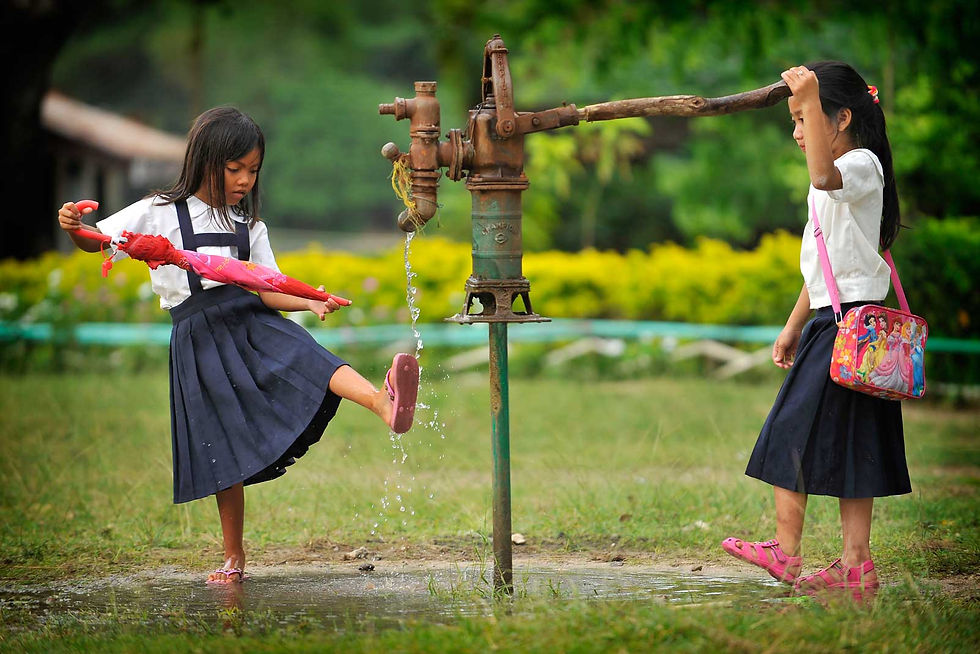- Ziggurat Realestatecorp

- Dec 17, 2024
- 3 min read
Scorching temperatures across the world set troubling new records. This is what it felt like
Over and over, the numbers tell the same story: 2024 was Earth’s hottest year on record, knocking the previous record holder 2023 out of the top spot.
But temperatures alone can’t describe the human cost: humidity that challenges the body’s ability to cool itself; nighttime temps that rob people of sleep; power outages; wildfire smoke; ruined crops; rising cases of mosquito-borne disease.
Meanwhile, record-breaking water temperatures in the Atlantic Ocean and the Gulf of Mexico fueled hurricanes Helene and Milton. Helene’s torrential rains caused flooding across six states in the U.S. Southeast, killing over 200 people.
Other parts of the world have their own stories to tell about the impact of 2024’s extreme heat. Here are some of those accounts.

1 PHOENIX | May–September Arizona’s capital experienced 113 straight days of daytime temperatures topping 100° Fahrenheit, with hundreds of heat-related deaths recorded. Phoenix has one of the world’s largest urban heat-island magnitudes: City temperatures are about 12 degrees higher than those in surrounding rural areas.
2 MEXICO CITY | May–June An extreme heat wave, on top of an extended drought, caused blackouts and was linked to over 120 deaths. The resulting water scarcity raised fears that North America’s largest metropolis was just weeks from Day Zero — a theoretical day when the region would run out of water.
3 SÃO PAULO | August–September Extreme heat in the Southern Hemisphere’s winter plus prolonged drought fueled wildfires in Brazil’s Amazon rainforest. Fine particles in São Paulo’s air were 14 times the World Health Organization’s recommended limit, causing the city to be ranked as the world’s most polluted for four consecutive days, from September 9 to September 12.
4 RIO DE JANEIRO | March During a heat wave in Brazil, the maximum measured temperature reached 107.6° F. But it felt even hotter. The heat index — a measurement that also includes humidity — soared to a record 144.1° F, testing the limits of humans’ heat tolerance.
5 PARIS | July–August Temperatures during the Olympics may not have broken records, but they were still scorching. Without climate change, Paris would have been about 5 degrees cooler, researchers determined. That made the Games more dangerous for athletes. Europe is the world’s fastest-warming continent, heating at a rate twice the global average.
6 LONGYEARBYEN | July–August August temps in the world’s northernmost settlement, on Norway’s Spitsbergen Island, were the highest ever recorded for that month, soaring to 68° F — more than 3 degrees higher than the previous record, set in 1997. In July, ice caps there broke the all-time record for daily melting, losing ice at a rate five times the norm.
7 BAMAKO | February–April Heat waves across West Africa’s Sahel region caused power cuts and spikes in hospital admissions. From April 1 to April 4, a hospital in Mali’s capital recorded a total of 102 deaths; the previous year, the hospital noted 130 deaths for all of April. Climate change amped up daytime highs by 2.7 degrees and kept nights 3.6 degrees warmer than usual.
8 GAZA | April A three-day heat wave exacerbated the humanitarian crisis in Palestine. Nearly 2 million displaced people in refugee camps and overcrowded shelters lacked protection from the heat and faced water and food shortages, power outages, limited access to health care and spikes in waterborne diseases.
9 DELHI | May–June India’s capital territory endured 40 straight days of daytime highs reaching 104° F, with a new record set on May 28 of 121.8° F. The unrelenting heat killed over 100 people, the nonprofit organization HeatWatch India estimates.
10 MANILA | April The Philippines’ megalopolis of over 14 million people sweltered through a deadly 15-day heat wave, an event that would have been impossible without climate change. The heat brought water shortages, crop losses and school closures.
11 EAST ANTARCTICA | July At winter’s peak, temperatures across a big chunk of the continent hovered at –4° F, about 50 degrees higher than normal. The event was the largest temperature anomaly anywhere this year.
Source: Science News December





